Tory PM Edward Heath concealed the identity of a paramilitary organisation which perpetrated a massacre in Belfast in 1971. He did so in the hope of acquiring the votes he needed to win a majority in the House of Commons to enable the UK to join the EEC, the forerunner of the EU. What he did has remained the best kept and murkiest secret of the EEC-EU-BREXIT saga of the last 50 years. A string of declassified documents have now emerged which, when read together, expose what Heath, the British Army, propaganda operatives and the RUC Special Branch did. The documents are about to be presented to the new British Cabinet Secretary, Simon Case.
By David Burke.
INTRODUCTION.
Ted Heath’s role in the cover-up of the McGurk’s Bar bomb atrocity of 4 December 1971 is the best kept dirty secret of the EEC-EU-UK-Brexit saga of the last 50 years. It would have remained under wraps indefinitely but for the determination of the historian, author and McGurk’s bomb campaigner Ciarán MacAirt.
Irrefutable documentary proof of the Heath-McGurk’s scandal is about to reach the Whitehall desk of Simon Case, the former GCHQ spook and Northern Ireland Office official who is now Cabinet Secretary to Boris Johnson’s government.

Case was a key figure in the British Establishment conspiracy which refused to order a judicial inquiry into the murder of the lawyer Patrick Finucane two weeks ago. Everyone in Whitehall – including Case – knows that MI5-FRU and RUC agents in the UDA murdered Finucane with ‘cabinet level’ approval. If Case was unhappy with this, he did not resign or protest publicly (nor even discreetly to a friendly journalist). The Finucane decision was an affront to decency, democracy and a direction from the UK’s Supreme Court.
Case has surely learnt by now that a key aspect of his job is to cover up for a certain type of murder carried out during the Troubles. He is now about to be put to the test again. On this occasion it will involve his approach to the massacre of 15 decent and honest people: the innocent victims of The McGurk Bar bomb massacre of 4 December 1971 in Belfast.
HEATH’s FAUSTIAN PACT
In December 1971 the UK’s prime minister, Edward Heath, was working to secure Britain’s entry to the EEC, the forerunner of the EU. He needed all the votes he could attract to get his legislation over the line in Westminster. One group with the potential to help was the Official Unionist Party. It was led by Brian Faulkner, the Prime Minister of Northern Ireland. The Unionists held eight key votes in the Commons in London.
Faulkner had just taken over from James Chichester-Clark as prime minster of NI on 23 March 1971 on the basis he was the Unionist hard man who would defeat the IRA. As minister for home affairs during the IRA’s Border Campaign, 1956 – 1962, he had introduced internment, something Unionists credited with defeating the IRA on that occasion.
It has never been a secret that there was a price to pay to keep Faulkner happy: Heath was to re-introduce internment. Although Faulkner was prime minister of NI, he still needed Heath and his army to make it happen. Crucially, Faulkner wanted internment for the IRA only. This meant – and Faulkner knew full well – that the UVF, Red Hand Commando and the UDA would to be left alone to bomb, kidnap, torture and murder Catholics.
Heath’s cabinet had sought a balanced internment with the IRA and loyalist groups being swept up at the same time. They also wanted guns held by rifle clubs called in. The overwhelming majority of these weapons were in Unionist hands. A third requirement was a ban on parades. None of this was acceptable to Faulkner who went as far as to suggest there was no evidence of Loyalist terrorism and that the guns held by the members of rifle clubs were not a security threat. A ban on parades, he argued, could not be enforced. Heath caved in on all three issues., save that there was to be a six month ban on parades.

An overview of UVF terrorist actions – including those of the 1960s and the period 1970 – 1971, can be found at: https://en.m.wikipedia.org/wiki/Timeline_of_Ulster_Volunteer_Force_actions
Despite the murders and bombings perpetrated by the UVF and Red Hand Commando, when internment was introduced in August 1971, Loyalist paramilitaries were not swept up by the Army. Instead, they were let go about their gruesome activities.
Heath was a man with a ruthless edge perfectly capable of bending the rules to get what he wanted. As a junior minister in the Foreign Office, he had been involved in machinations that led to the murder of the democratically elected prime minister of the Congo, Patrice Lumumba. An official at the Foreign Office – Howard Smith – had started the murder ball rolling by suggesting that MI6 assassinate Lumumba.
In his private life Heath was just as selfish. In August 2015 the Wiltshire Police launched ‘Operation Conifer’ into allegations that he had been a paedophile. In 2017 the force announced that grounds existed to suspect him of child abuse. As a matter of law, the force was not entitled to reach any conclusions about the potential guilt of Heath and it did not. The furthest it could go was to state that if Heath were alive, he would have faced further questioning about the accusations levelled against him. Mindful of this, the force revealed that Heath would have faced questions under criminal caution relating to:
- One incident of rape of a male 16;
- Three incidents of indecent assault on a male under;
- Four indecent assaults on a male under 14;
- Two indecent assaults on a male over 16.
The investigation spanned the period 1956-92. None of these incidents took place while Heath was PM, 1970-74. See also Carl Beech and the ‘Useful idiots’ at the BBC. The inco6mpetence of the BBC has now made it a pawn in the cover-up of VIP sex abuse. The darkest forces in MI5 and MI6 are the true beneficiaries of its inepitude.
THE UVF BOMB ATTACK THAT THREATENED IRA-ONLY INTERNMENT
Potential disaster for Heath’s efforts to keep Faulkner onside struck at 8:45 p.m. on 4 December 1971 when a UVF gang set out on a bombing mission. One of those involved was a man called Robert James Campbell. The UVF bomb exploded outside a small pub in Belfast called McGurks, a cosy place where Catholics and Protestants from the same neighbourhood – all of whom knew each other well – met for a few drinks.

The UVF unit left the bomb outside the pub. It was made up of forty to fifty pounds of gelignite and ignited by lighting a fuse. A paper boy saw the UVF car pull up and a man deposit the bomb outside the pub before fleeing. He spotted the fuse sparking and warned the man not to go up the road. The bomb was so large it demolished the building.
The UVF claimed responsibility under the cover name of the ‘Empire Loyalists’.
According to Robert James Campbell, his unit had originally wanted to attack another establishment which they believed was frequented by the Official IRA and its supporters, but it had two guards posted outside. After waiting for an hour for them to go inside, the UVF unit decided to go elsewhere. They drove to McGurk’s.
THE ARMY CONCLUDEDS THE UVF WAS RESPONSIBLE
The British Army had two Ammunition Technical Officers, i.e., bomb disposal experts circulating around Belfast on standby in case a bomb was detected. They attended at the scene in the immediate aftermath of the explosion. Because of the darkness and the debris, they were unable to determine the exact location of the detonation. They decided to carry out a further inspection at daylight the next day.
Following the daylight inspection, the Army’s 39 Brigade HQ in Lisburn recorded in its Ops Log at 11.10am:
ATO is convinced bomb was placed in the entrance way on the ground floor. The area is cratered and clearly was the seat of the explosion. The size of the bomb is likely to be 40/50 lbs.
This information corroborated what the paper boy had witnessed.

If IRA-only internment was going to be preserved, a lot of dirty tricks were going to have to be set in motion to fend off demands for the internment of Loyalist extremists such as the UVF. Otherwise, Faulkner and his cronies would withdraw their support for Heath’s EEC initiative.
Fifteen people died as a result of the bomb attack, the largest massacre up to that point in time.
At the time security policy was still implemented through the Joint Security Committee (JIS) run by Faulkner at Stormont. The JIS controlled the RUC.
The RUC Special Branch became involved in the operation to conceal the UVF’s responsibility for the bomb attack and thereby preserve IRA-only internment. This could only have happened on orders from Stormont.
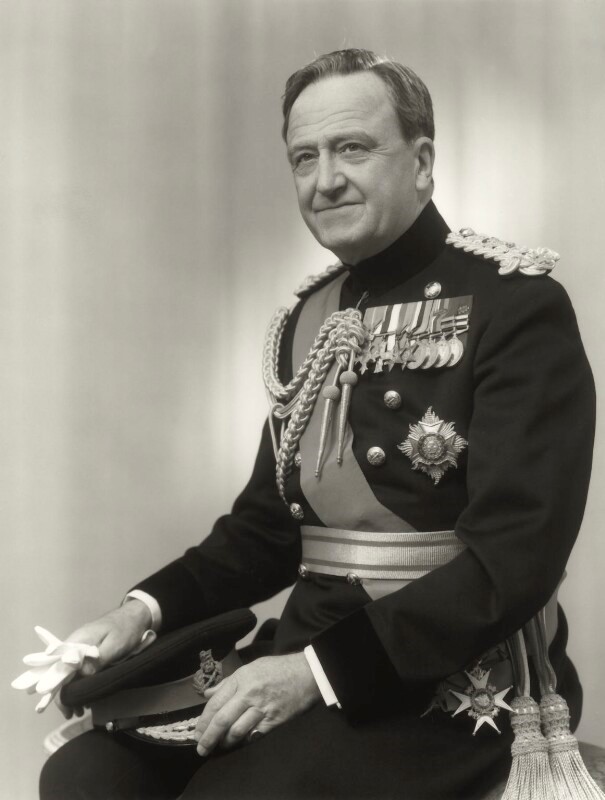
Unfortunately for the conspirators at Stormont and in the RUC, they had a bit of catching up to do. A British Army report had been prepared for Lt General Sir Harry Tuzo which pinned the blame for the attack on the UVF. A report submitted to General Tuzo at 8.00am on the morning after the bombing also stated:
A bomb believed to have been planted outside the bar was estimated by the ATO to be 30/50 lb of HE (High Explosive).
A copy of this report was suppressed for decades until it was unearthed by Ciaran MacAirt, a grandson of one of the bomb victims. It is just one of many he has discovered.
At exactly the same time General Tuzo was studying the above report, the RUC transmitted a report by an overnight Duty Officer falsely claiming:
Just before the explosion a man entered the licensed premises [McGurk’s] and left down a suitcase, presumably to be picked up by a known member of the Provisional IRA. The bomb was intended for use on other premises. Before the ‘pick-up’ was made the bomb exploded.
It will come as no surprise that during subsequent investigations, the RUC’s ‘source’ of this allegation has never been identified.
HEATH’S PROPAGANDA MACHINE TAKES OVER
Luckily for Heath, intelligence and propaganda dirty trick machines were already in place in the North and ready, willing and able to conceal what had really happened.
Hugh Mooney, an officer in the Information Research Department (IRD) of the Foreign Office, was already on the ground in Belfast. The IRD ran black propaganda operations for the British government. He operated under cover as ‘Information Adviser to the GOC’ (Lt General Sir Harry Tuzo). He had been in place since early in 1971.
Another propaganda operative, Cliff Hill, was also in place. He was a senior member of the Foreign and Commonwealth Office, Guidance and Information Policy Department.
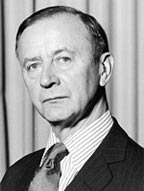
Another key figure in the machine was the man who had proposed the murder of Patrice Lumumba in the Congo, Howard Smith. Heath had appointed him as UK Representative (UKREP) to Northern Ireland. The UKREP was a bespoke position, in effect the equivalent of London’s ambassador to NI in the pre-Direct Rule era. Smith later became Director-General of MI5.
On 4 November 1971 – exactly one month prior to the attack on McGurk’s – a meeting had taken place at 10 Downing Street to expand the operations of the propaganda machine in the North, especially Cliff Hill’s role. It was attended by senior Government officials and military staff, including:
- Field Marshal Sir Michael Carver, Chief of the General Staff of the British Army;
- Sir Dick White (ex-Director-General of MI5 and ex-Chief of MI6), Coordinator for Intelligence and Security at the Cabinet Office;
- Norman Reddaway, Co-founder of the Information Research Department (IRD);
- John Groves, Chief Press Officer at the MoD;
- Donald Maitland, Press Secretary to Edward Heath.

Cliff Hill’s role was designated at para 2 (d) of the minute of the 4 November meeting. It stated that he was to:
blacken the reputation of the IRA by highlighting the brutality towards individuals, the cowardly character of their tactics and the callous disregard for the lives of innocent bystanders.
Significantly, there was no reference to the UVF in Hill’s brief, despite the fact that the UVF was then a proscribed organisation which had been carrying out bomb attacks in Northern Ireland and the Republic of Ireland since 1968.
VILIFYING THE INNOCENT MURDER VICTIMS OF THE UVF

Mooney and his colleagues swung into action after the attack on McGurk’s Bar and the threat it posed to Heath’s reliance on Faulkner’s support to vote to join the EEC in Westminster. Mooney prepared a false account of the night designed to preserve the policy of IRA-only internment and keep Faulkner on side.
A story was concocted that the bomb had exploded inside the pub, a lie but one which built a platform to pretend the bomb was an IRA ‘own goal’, i.e., that it was a Provo bomb in transit to a target somewhere else which had gone off prematurely. There were a number of weaknesses with the story. For a start, the UVF bomb had been ignited by a fuse, not a timer. Fuse lit bombs were not prone to detonate prematurely as were those with timers.
Mooney also concocted a smear that vilified the murder victims as IRA members and supporters. In reality, none of the patrons of the pub had anything to do with the IRA. The pub was a tiny place where everybody knew each other, Catholic and Protestant. An IRA man, woman or unit on a visit would have stood out like a sore thumb.
BRIGADIER KITSON JOINS THE CONSPIRACY
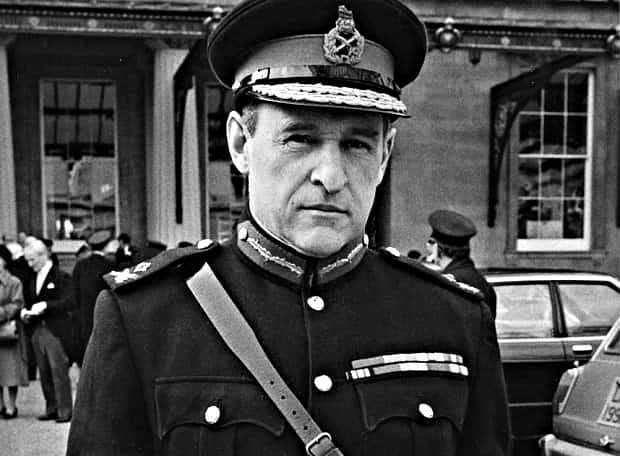
Brigadier Frank Kitson had been in command of the 39 Brigade in Belfast since September 1970. He had directed all of his efforts towards the defeat of the IRA using methods fair and foul. He did not want to open a further front against Loyalist paramilitaries. This helps explains why the false report – created despite the evidence gathered by the Army – was promoted by the 39 Brigade. Lying came second nature to Kitson as his laughable evidence – on oath – decades later at the Saville Inquiry proves, a story for another day.

The Log Sheet produced by Kitson’s 39 Brigade read as follows:
RUC have a line that the bomb in the pub was bomb designed to be used elsewhere, left in the pub to be picked up by Provisional IRA. Bomb went off and was a mistake. RUC press office have line on it-NI should deal with them.
FAKE NEWS 1971-STYLE
Hugh Mooney was a friend of The Times of London journalist John Chartres, who was also a major in the Territorial Army. Mooney fed him the smear about the IRA involvement and ‘own goal’ which was published on 5 December 1971.


Mooney would engage in an almost identical campaign of vilification directed at the victims of Bloody Sunday a few weeks later, i.e., smearing them as IRA members.
LYING TO THE HOUSE OF COMMONS
On 6 December 1971 Stanley McMaster, MP for East Belfast, asked Lord Balneil, Heath’s Minister of State for Defence, about the attack. The question was a plant. In response Balneil told Parliament:
The security forces have not yet been able to establish precisely where the bomb was placed.
Investigations by Army ammunition technical officers indicate that the bomb was detonated within the structure, probably just inside the bar on the ground floor. I am afraid that I cannot be more positive than that, because hon. Members will have seen on television the extent of the damage and will realise the difficulty of establishing firmer conclusions. But investigations are continuing.
Balneil’s answer was incorrect. As shown above, some 48 hours before he made his statement in Parliament, Army bomb disposal experts had reported the precise spot where the bomb had detonated and that was “in the entrance way on the ground floor.”
Documents obtained by Ciarán MacAirt show that Balneil’s response to McMaster was prepared and “approved” by senior MoD officials in Northern Ireland and at the MoD. The documents show that the officials were running a nasty whispering campaign too:
I understand – though this should not be revealed publicly – that two of those killed have been identified as members of the Brady [Provisional] IRA.
‘Brady’ was a reference to Ruairi O Bradaigh one of the co-founders of the Provisional IRA. (The other faction was the Official IRA.) The allegation about IRA involvement – whether Provisional or Official – was totally false.
As part of the conspiracy to conceal the true identity of the attackers and to blame bombing on the IRA, further attempts were planned to provide additional misleading evidence to Parliament by planting a question with a chosen MP who was apparently ‘seeking an update on the McGurk’s attack’. The disclosed documents contain the following ‘approved” response for Lord Balneil to give in Parliament:
Investigations are not yet complete, and inquests have not yet been held. However, further investigations by forensic experts and by Army ammunition technical officers have confirmed, on the basis of the pattern of debris and the effect of the explosion on the structure that the bomb exploded within the building. Five of the deaths were as a direct result of the blast, not as a result of the building collapsing. These conclusions are consistent with theories that the bomb went off accidentally, perhaps while in transit.

Clearly, this statement was a more determined effort to get Balneil to include the initial disinformation created by the RUC. In the event, although senior officials at Army HQ N Ireland and at the MoD approved the statement it was not used. It is believed that the initial attempts to blame the IRA for the attack had been so effective that further disinformation was not necessary. Nevertheless, the inescapable fact is that this was yet another deliberate attempt to mislead Parliament.
CAMPBELL OF THE UVF CONFESSES
The operation was a complete success.
The mainstream British media continued to blame the IRA.
There was no immediate pressure to intern the UVF as a result of the McGurk’s Bar bomb attack.
The RUC did not investigate the UVF gang which carried out the massacre. It is not possible – at this time – to analyse how many more people were killed because the RUC let the bombers go free. We do not know who they were and what they did next. However, as an active service unit of the UVF in Belfast in 1971, it is certain they continued to kill.
As it turned out, Heath did not need the support of the Unionists to push his pro-EEC legislation throught Westminster and the UK joined the EEC with the support of only a few of them. By the time of the vote, 13 July, 1972, other factors had intervened to disrupt the relationship between the Tories and the Unioinsts, the least of which was the introducition of Direct Rule as a replacement for Stormont.
Ultimately, it proved impossible to resist internment for loyalists due to other crimes they committed. It was eventually introduced across the board in February 1973 which was after the EEC accession legislation had passed through parliament.
In 1977 Robert James Campbell of the UVF was arrested for other terrorist offences and admitted his part in the bombing. He was given 15 life sentences for his part in the attack and another life sentence for the murder of Protestant workman, John Morrow, in January 1976.
Despite the confession and conviction of Campbell, the secret machinations which had gone on behind closed doors did not emerge.
JOHN TAYLOR, TIME TO APOLOGISE

Some Unionist politicians still maintain that the bombing was carried out by the IRA. John Taylor, claimed in 1971 that McGurk’s Bar was a “drinking hole for IRA sympathisers”.
In the Belfast Telegraph on 3 April 2018, Taylor, by then Lord Kilclooney, said he had nothing to apologise for after saying that McGurk’s Bar was a “drinking hole for IRA sympathisers”. Later he tweeted about the McGurk’s Bar Bombing, saying there had been a “political campaign to place the blame on the UVF”, adding he had “never received evidence to support this”.
He appears to have forgotten Campbell’s arrest, confession and conviction.
The families of the UVF terrorists deserve an apology from Taylor.
THE BALL IS NOW IN THE COURT OF THE NEW CABINET SECRETARY, SIMON CASE
Ciarán MacAirt has assembled a bible of documents – many of them quoted above – which show what happened on the night of the bombing i.e. how the military realised the truth but the RUC Special Branch and the IRD intervened and sold a pup to the press. A full copy of his report can be downloaded here: https://papertrailpro.box.com/s/l8tep0db39ghzmyttf31as02z7s6t5qk
The documents are now about to be presented to the new Cabinet Secretary, Simon Case in London.
Case was once in charge of strategy at the UK’s cyber snoop organisation GCHQ i.e., the cyber ferrets who monitor all sorts of private communications around the globe. One of its functions is to collect blackmail material for HMG’s operatives in MI5 and MI6.

Worse still, Case once worked at the Northern Ireland Office, a cesspit where a number of key officials knowingly cover-up such scandals such as those involving State-Loyalist collusion in assassination, the use of murderous British agents inside the IRA such as Freddie Scappaticci, not to mention the egregious child trafficking network that revolved around Kincora Boys’ Home in Belfast.
It does not seem unfair to suggest that it is not possible to climb to the top of Whitehall’s blood-stained greasy pole without abandoning one’s integrity. Case now has access to all of Britain’s darkest secrets. He knows what happened to Patrick Finucane. He can click his fingers and have the true files on Kincora taken from the massive safe in his suite of offices produced to him.
Sooner or later, it will dawn on him that he has sold his soul. A person with backbone and decency would have supported an inquiry into the Finucane assassination and would put the Kincora survivors out of their misery by revealing the horrible truth about the State’s involvement in those scandals. So, returning the McGurk’s scandal, what are the chances that Simon Case will order an internal inquiry into why:
- The RUC covered up a massacre of 15 innocent Catholics;
- Why Tuzo, Kitson and the British Army went along with it;
- Why the IRD misled the media;
- Why the UVF killers responsible for the McGurk’s Bar bomb attack were not hunted down and thereby left free to murder more Catholics;
- Who were the real bombers;
- Were any of the real UVF bombers interned later;
- Why were lies circulated in the House of Commons.

Maybe we should be more forgiving and afford Case the benefit of the doubt (despite the Finucane precedent.) Maybe he will realise that The McGurk’s Bar murders rank as one of the most shameful acts of ‘The Troubles’. Maybe when he realises that agencies of the State manipulated and misled the British Parliament for purely political purposes, he will do the right thing. Time will tell, and do so very shortly.
With regard to the Finucane case see also: Thatcher’s Murder Machine, the British State assassination of Patrick Finucane. By Joseph de Burca.
WILL THE POLITICIANS CARE THAT PARLIAMENT WAS MISLED?

And what of the politicians?
All of the declassified information unearthed by MacAirt has been available to a variety of British government departments, including the Northern Ireland Office, the Intelligence Services and the RUC since 1971.

Ciarán MacAirt published a book in 2012 which exposed many of the issues about the scandal. The passage of time and further research has revealed more about it.
Why did the politicians do little or nothing for the relatives of this egregious massacre?
Why were they not afforded the same type of support that other deserving victim groups enjoyed?
Why is it that we are only reading these dirty trick files now – 49 years later – largely through the determined efforts of one man. Why are British and Northern Irish MPs not outraged that people at very senior levels in Whitehall conspired, to say the least, to mislead the UK’s parliament?
Now that the information is in the public domain and elected representatives on all sides have access to it, what are they going to do with it?
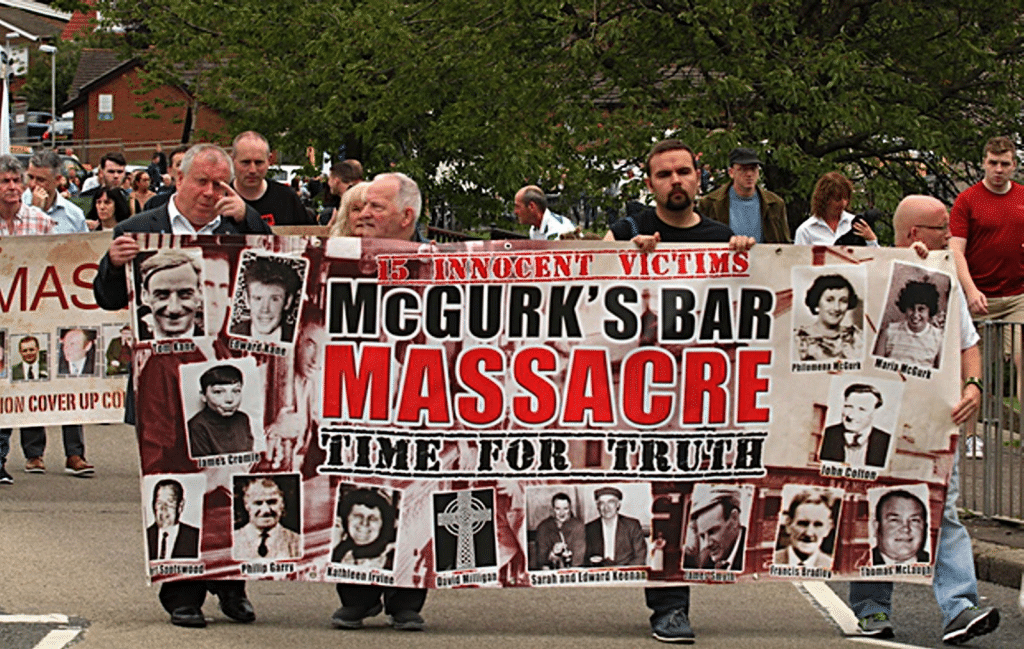
Meanwhile, it is worth nothing that in the face of this web of deceit and deception, the relatives of the victims, led by Ciarán MacAirt, have pursued a dignified yet very determined course to obtain justice. The time has come for the British Government to bring proper closure to all those who suffered as a result of this atrocity. Further delay will be inexcusable. It’s over to you now Mr Case and your master, Boris Johnson.
OTHER STORIES ABOUT BRIGADIER FRANK KITSON, BLOODY SUNDAY, SOLDIER F, THE BALLYMURPHY MASSACRE AND COLONEL DEREK WILFORD ON THIS WEBSITE:
Soldier F, the heartless Bloody Sunday killer, is named.
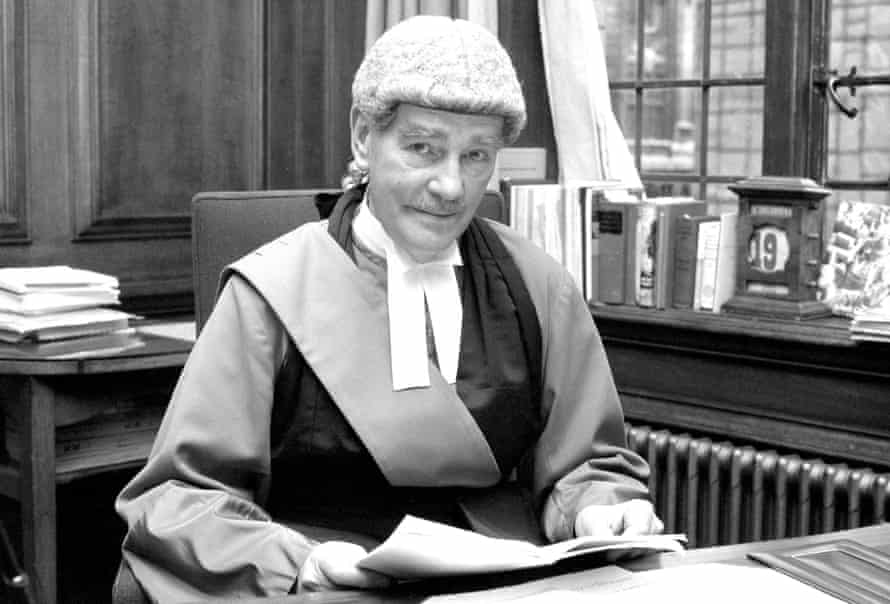
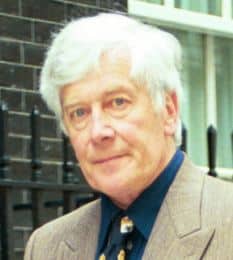

Brigadier Kitson’s motive for murdering unarmed civilians in Ballymurphy.